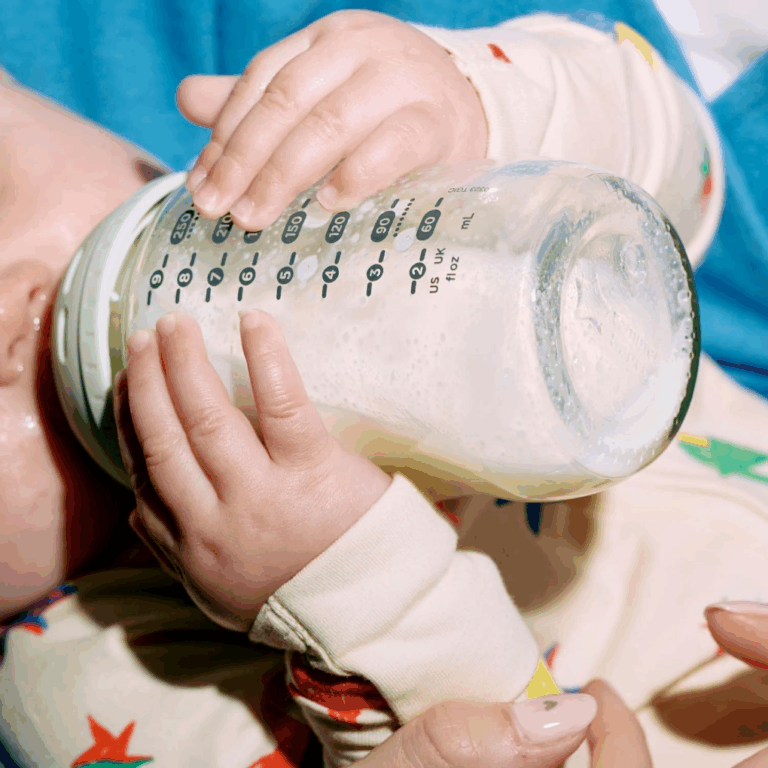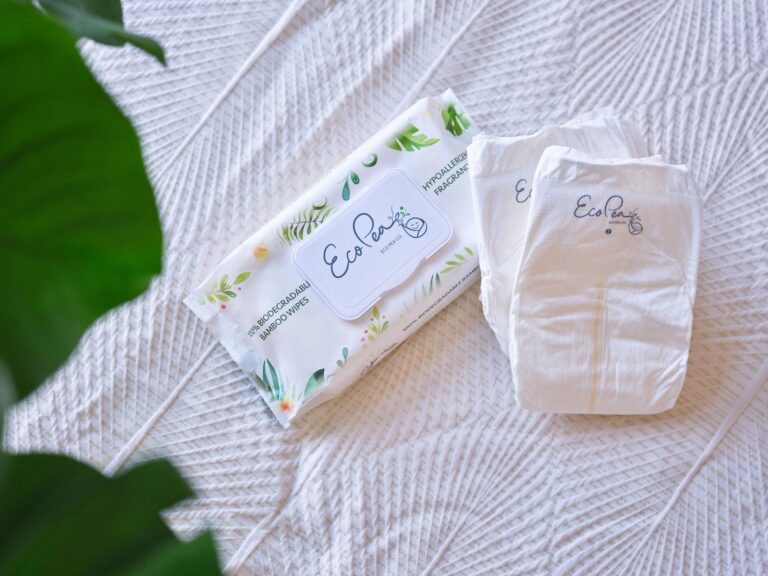Every year, the back-to-school season kicks off a shopping frenzy — and unfortunately, a waste frenzy too. From plastic-wrapped notebooks to flimsy backpacks that barely survive the first semester, the rush for new back-to-school supplies often leads to a mountain of trash. According to the National Retail Federation, families in the U.S. spend over $41 billion1 on school supplies each year, and a big chunk of that ends up in landfills once the school year ends.
The truth is, most conventional school supplies are designed for convenience, not longevity. Single-use plastics, synthetic fabrics, and low-cost items may seem like a good deal, but they carry hidden costs for the planet — and often for your wallet when things need constant replacing.
Choosing eco-friendly back-to-school supplies means investing in durable, sustainable products that are healthier for your kids and kinder to the Earth. Whether it is a notebook made from recycled paper, backpacks crafted from organic cotton, or plastic-free lunch gear, small swaps can make a big impact—and help teach the next generation that better choices are always within reach.
When Do Back-to-School Supplies Go on Sale?
If you’re looking to stock up on back-to-school supplies without breaking the bank, timing is everything. Most major back-to-school sales kick off in mid-July and peak through early August, just before the new school year starts.
Big box stores, office supply chains, and even eco-friendly online shops often roll out their best deals during this window. You’ll find discounts on everything from notebooks and backpacks to lunch containers and art supplies. Some brands even offer bundle deals or bonus donations to schools if you shop during this time—which is a great way to stretch your dollar and your impact.
If you want the best selection, shopping in late July or the very first week of August is usually your safest bet. But if you’re willing to wait, many stores offer even deeper markdowns after the first day of school, when they’re clearing out extra inventory. (Just keep in mind that popular eco-friendly brands and colors can sell out early.)
🌟 Pro Tip:
Some sustainable brands—like Wisdom Supply Co. and Terra Thread—offer early bird sales if you sign up for their newsletters. It’s a smart way to snag the best deals before the rush starts. Whether you’re buying fresh or reusing what you can, planning ahead a little makes back-to-school shopping a lot less stressful—and a lot more affordable.
What to Get for Back-to-School Supplies?
When it’s time to start shopping, the list of back to school supplies can feel endless. But the basics stay consistent year after year—and it’s easy to make smarter, more sustainable choices with just a few small swaps.
Here’s a simple checklist to guide your shopping
- Notebooks and Paper — Choose recycled paper or FSC-certified options. Look for brands that use soy-based inks and plastic-free bindings.
- Pens, Pencils, and Highlighters — Go for refillable pens, plantable pencils like Sprout, and non-toxic highlighters made from recycled or biodegradable materials.
- Backpacks — Pick durable backpacks made from organic cotton, recycled materials, or Fair Trade-certified fabrics that can handle a few years of use.
- Lunch Gear — Reusable water bottles (stainless steel or glass), stainless steel food containers, and washable lunch bags made from organic cotton or linen.
- Art Supplies — Non-toxic crayons, paints, colored pencils, and markers made with natural ingredients or sustainable wood sources.
- Folders and Binders — Choose ones made with recycled cardboard or paperboard instead of plastic.
- Tech Accessories — If needed, look for laptop sleeves and tablet cases made from recycled or natural materials.
Optional Add-ons for a Greener Year
- Reusable snack bags or beeswax wraps
- Recycled paper planners or calendars
- Eco-friendly pencil cases made from fabric, not plastic
If your child’s school provides a supply list, use it as a guide—but don’t be afraid to choose eco-friendly alternatives when possible. This is a great opportunity to show that sustainable swaps can fit right into everyday routines.
9 Eco-Friendly Back-to-School Brands to Check Out
Yoobi School Supplies
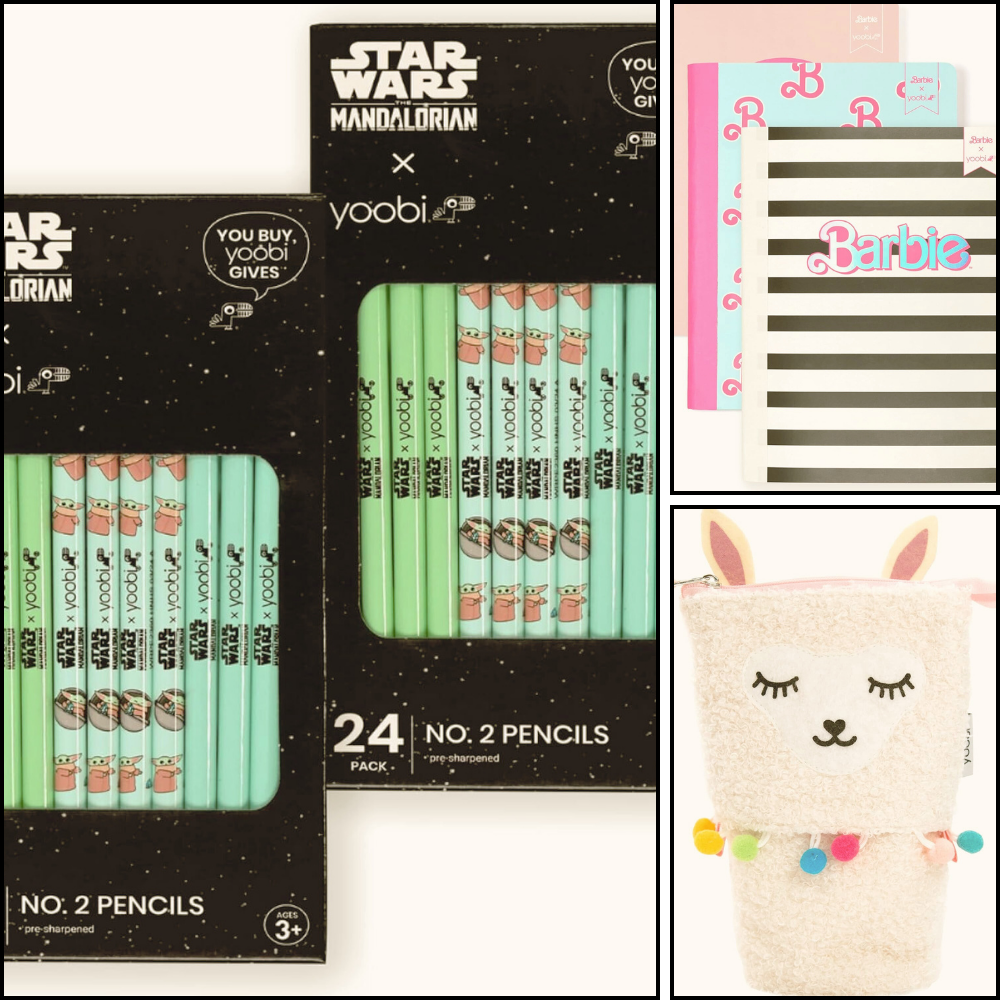
Another great way to shop more consciously for back-to-school supplies is by supporting brands that make a difference beyond just what’s on the shelves.
I used to volunteer with World Vision, an organization that partners with brands like Yoobi to help donate essential supplies to schools in need. Yoobi is one of my favorite brands for my son. Their products are colorful, creative, and built with a real purpose. For every Yoobi item purchased, they donate a school supply item to a needy classroom through their partnership with the Kids in Need Foundation—a simple but powerful way to make a real impact while shopping for everyday essentials.
When stocking up for my son, I chose Yoobi because of the fun designs (which he loved!) and because they’re working toward better sustainability. Many of their notebooks, folders, and accessories are made with recycled materials, and they’re actively reducing plastic in their packaging.
Some of Our Favorite Yoobi Finds
- Notebooks and Journals made with recycled paper (perfect for schoolwork and doodling)
- Fun and Durable Folders crafted from recycled PET plastic
- Bright Art Supplies like crayons and markers that have become a staple at home
Sprout World Pencils
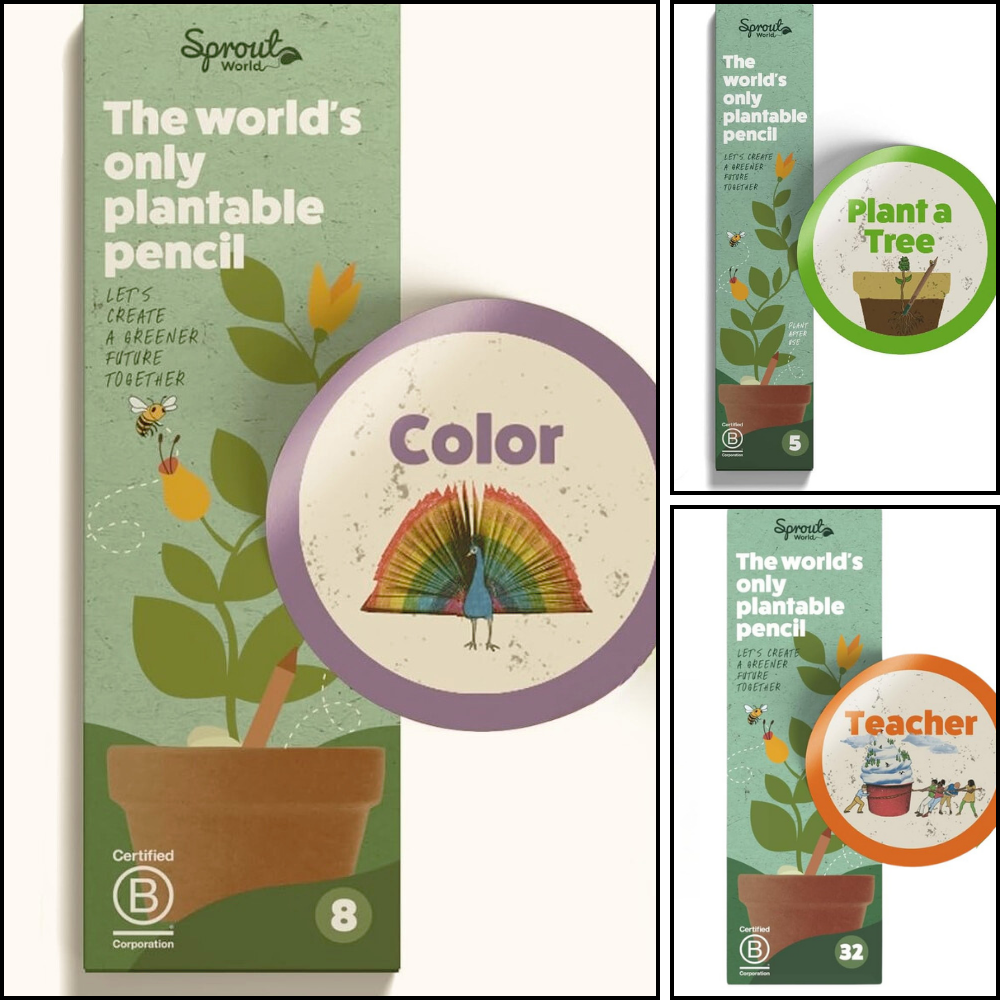
Sprout World takes sustainability to a whole new level. They’re best known for their plantable pencils — yes, actual pencils that you can plant once you’re done using them, and they’ll grow into herbs, flowers, or vegetables. It’s such a simple but powerful idea: instead of tossing something out when you’re finished with it, you give it a second life.
What really makes me love this brand is that sustainability isn’t just an afterthought for them — it’s built into everything they do. Their pencils and makeup liners are made with sustainably harvested wood, non-toxic materials, and biodegradable or recyclable packaging. They even manage their own Polish forest to ensure responsible sourcing.
Some of the Best Sprout World Products
- Plantable Pencils: Write with them, then plant them to grow basil, thyme, sunflowers, cherry tomatoes, and more.
- Plantable Makeup Liners: Eco-friendly eyeliner and brow liners that you can plant when they’re too short to use.
- Customizable Gifts: Personalize pencils or makeup liners with names, logos, or messages for eco-friendly gifts.
- Eco Accessories: Gift boxes, reusable packaging, and thoughtful extras all made with sustainability in mind.
Fluff Lunch Bags
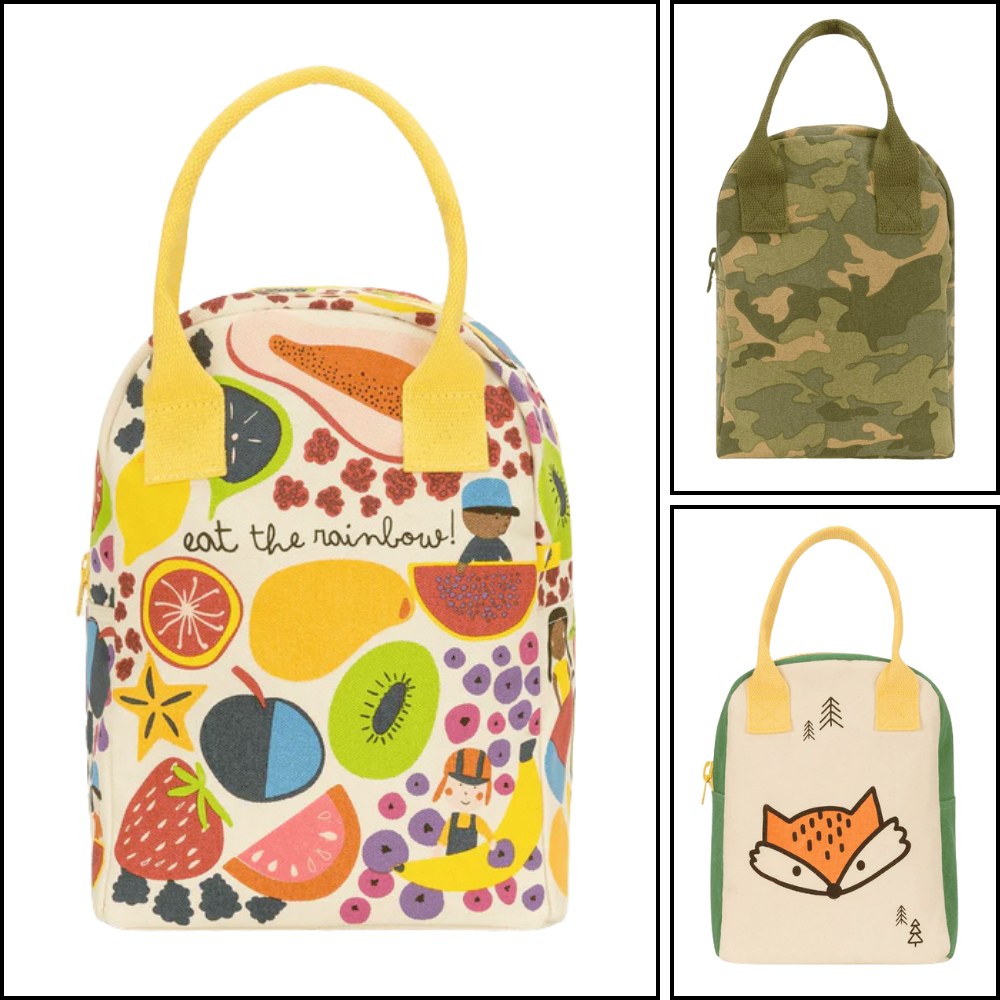
They say you eat with your eyes first—and these fun, vibrant Fluf bags definitely serve up some serious style before you even unpack your lunch. But Fluf isn’t just about looking good. They’re about doing good too, with a clear promise: no plastic, ever.
Every Fluf product is made with GOTS-certified organic cotton, recycled materials, and non-toxic, food-safe linings—absolutely no BPA, PVC, phthalates, or heavy metals. Their bags are built to last, easy to toss in the wash, and ethically made in certified facilities that prioritize fair labor and safe working conditions. The practical, planet-friendly design makes it easy (and honestly more fun) to ditch disposable plastic.
Related Article: How to Tell If Plastic Is BPA-Free
Popular Fluf Products
- Lunch Bags: Roomy, machine-washable bags made with organic cotton and water-resistant linings.
- Snack Bags: Reusable, washable alternatives to disposable plastic baggies.
- Tote Bags: Sturdy organic cotton totes perfect for groceries, books, or everyday errands.
- Zip Pouches: Handy little pouches for snacks, school supplies, or organizing essentials.
Decomposition Notebooks
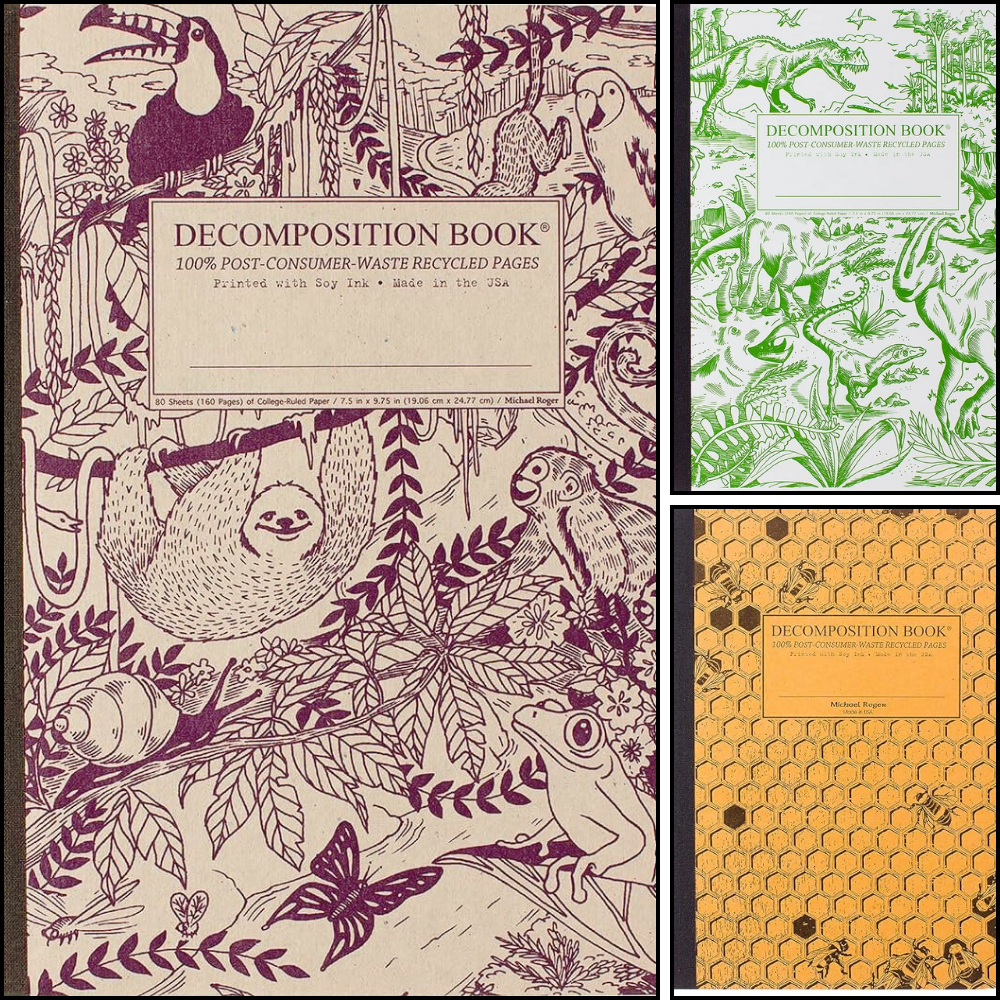
Decomposition is an eco-friendly stationery brand committed to sustainability and creative design. Every product is crafted with the planet in mind, using 100% post-consumer waste recycled paper, processed chlorine-free, and printed with soy-based inks. Most products are proudly made in the USA, reducing transportation emissions and supporting local manufacturing. Decomposition combines eco-conscious practices with playful, artistic designs, making sustainable choices feel anything but boring.
Popular Decomposition Products
- Decomposition Notebooks: Spiral-bound notebooks made from 100% recycled paper with a wide variety of artistic covers.
- Decomposition Sketchbooks: Thicker recycled paper for drawing and art projects.
- Pocket-Sized Notebooks: Compact, eco-friendly notebooks for notes on the go.
- Folders and Binders: Made from recycled paperboard as a sustainable alternative to plastic organizers.
- Greeting Cards: Eco-conscious cards printed on recycled paper with soy-based ink.
- Sustainably Sourced Pencils: Made with FSC-certified sustainably harvested wood.
Onyx + Green School Supplies
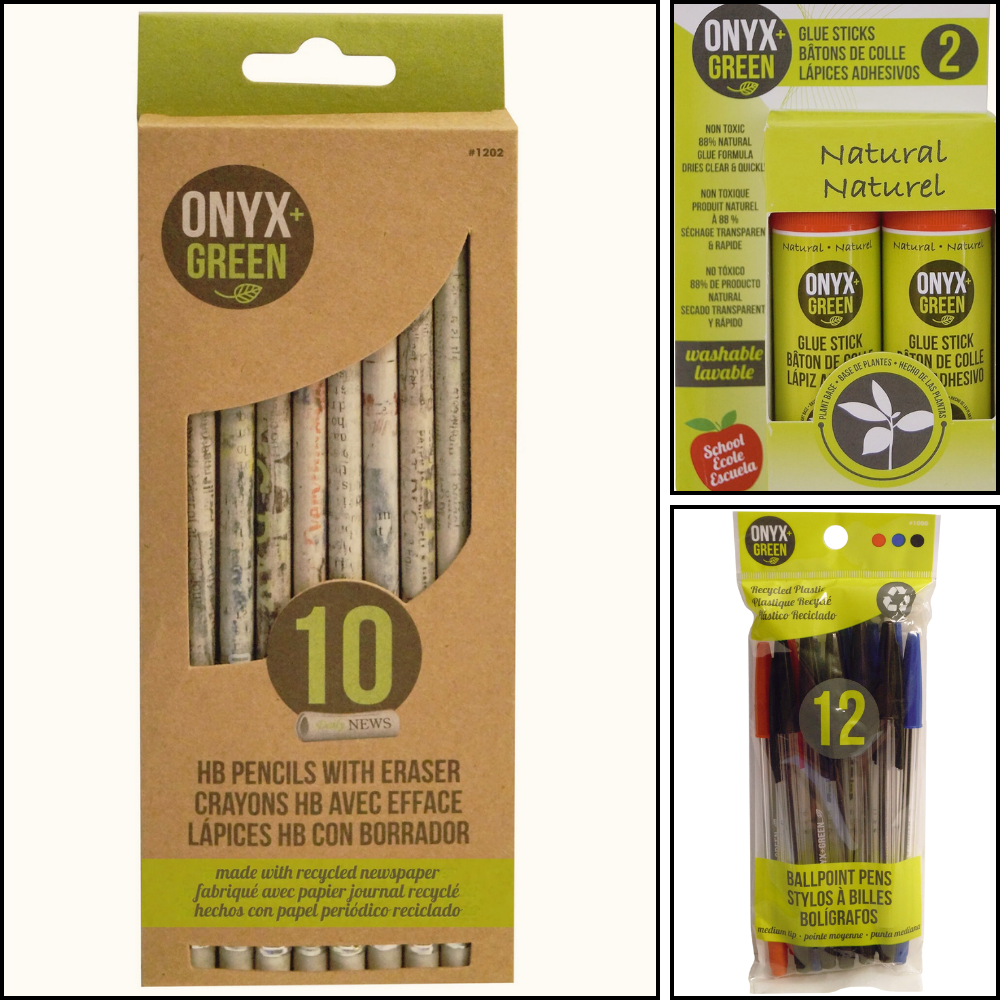
Onyx and Green are all about making everyday school, office, and home supplies more sustainable. They focus on using recycled, natural, and renewable materials in everything they create—from notebooks made with sugarcane and stone paper to pens made from recycled water bottles and wheat straw.
What I appreciate most about Onyx and Green is that they don’t just swap out a few materials here and there—they build their entire product line around better options. Whether bamboo, cork, recycled rubber, or even jute, they find creative ways to rethink the stuff we usually take for granted. And their products still feel fun and useful, not overly “eco” or flimsy like some green brands can sometimes feel.
Some Favorite Onyx and Green Products
- Notebooks and Journals: Made from sugarcane waste, stone paper, and recycled materials.
- Pens and Pencils: Crafted from recycled plastics, bamboo, and even newspaper.
- Erasers: Made from recycled and natural rubber, offering a better alternative to traditional synthetic erasers.
- Glue: Non-toxic glue sticks with packaging made from recycled materials.
- Desk Accessories: Eco-friendly scissors, staplers, and rulers using sustainable materials like recycled rubber.
- Lunch Accessories: Eco-friendly lunch bags made from natural fibers.
SoYoung Backpacks
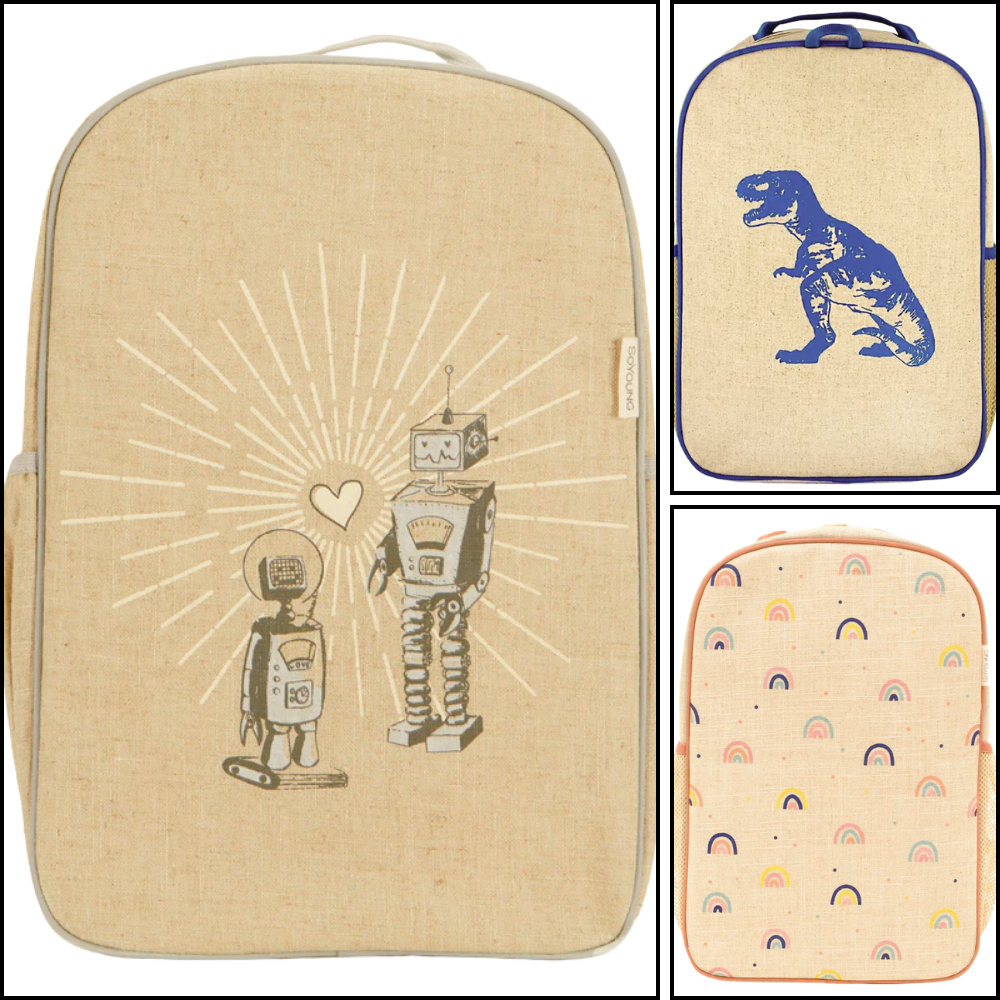
When it comes to finding a backpack that’s durable, practical, and actually sustainable, SoYoung really gets it right. Their lightweight backpacks are made with raw, uncoated linen and recycled materials, offering a beautiful, eco-friendly alternative to the typical plastic-heavy options. They’re designed with kids (and parents) in mind—easy to clean, built to last, and free from PVC, phthalates, lead, and other harsh chemicals you definitely don’t want near your family.
SoYoung’s designs feel fresh, modern, and intentionally simple—making them perfect for everything from preschool to weekend adventures. And just like their lunch boxes and totes, their backpacks prove that style and sustainability can (and should) go hand in hand.
Popular SoYoung Products
- Toddler Backpacks: Lightweight, eco-linen backpacks sized perfectly for little ones.
- Grade School Backpacks: Roomier backpacks for bigger kids, still made with sustainable materials.
- Lunch Boxes: Stylish, insulated lunch bags with washable inserts and eco-linen exteriors.
- Cooler Bags: Larger insulated bags ideal for picnics, outings, or longer school days.
- Travel Accessories: Reusable ice packs and leak-proof food jars that are safe and non-toxic.
Honeysticks Crayons and Paints
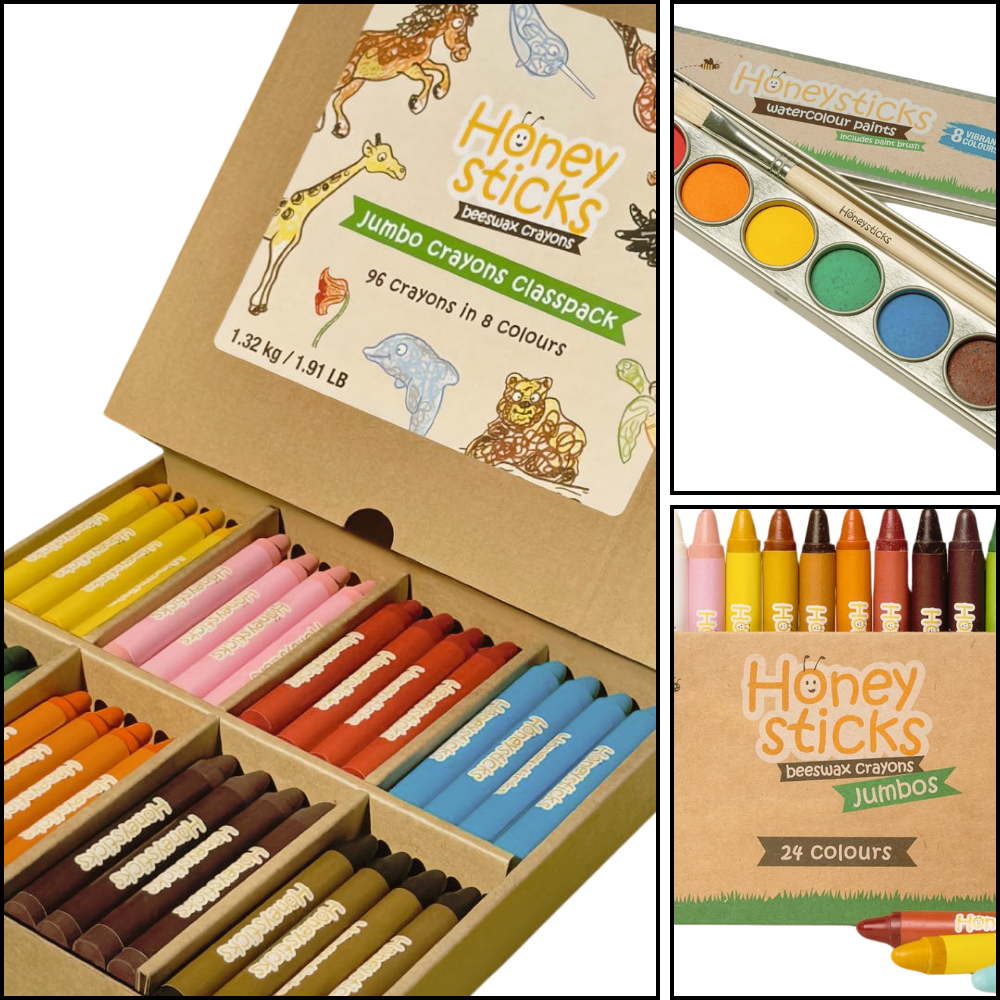
When it comes to safe, sustainable art supplies for kids, Honeysticks is a brand that really stands out. Their crayons, paints, and bath products are made with natural, food-grade ingredients—no toxic chemicals, no weird additives, and definitely no plastic fillers. In fact, their famous crayons are made from pure New Zealand beeswax, giving little artists a safer, more eco-friendly way to color their world.
Honeysticks also puts a lot of thought into the way their products are made. Their packaging is 100% recyclable and biodegradable, and their production processes are designed to minimize waste. It’s a brand built around the idea that creativity should be good for kids and for the planet.
Popular Honeysticks Products
- Original Beeswax Crayons: Thick, easy-to-hold crayons perfect for toddlers.
- Longs and Thins Beeswax Crayons: Crayons for older kids who want more precision.
- Natural Bath Crayons: Fun, washable crayons made for bath time adventures.
- Natural Watercolor Paints: Non-toxic, made with natural pigments.
- Bath Drops: Natural, fizzy color tablets for the bath made without artificial dyes.
LunchBots Food Containers
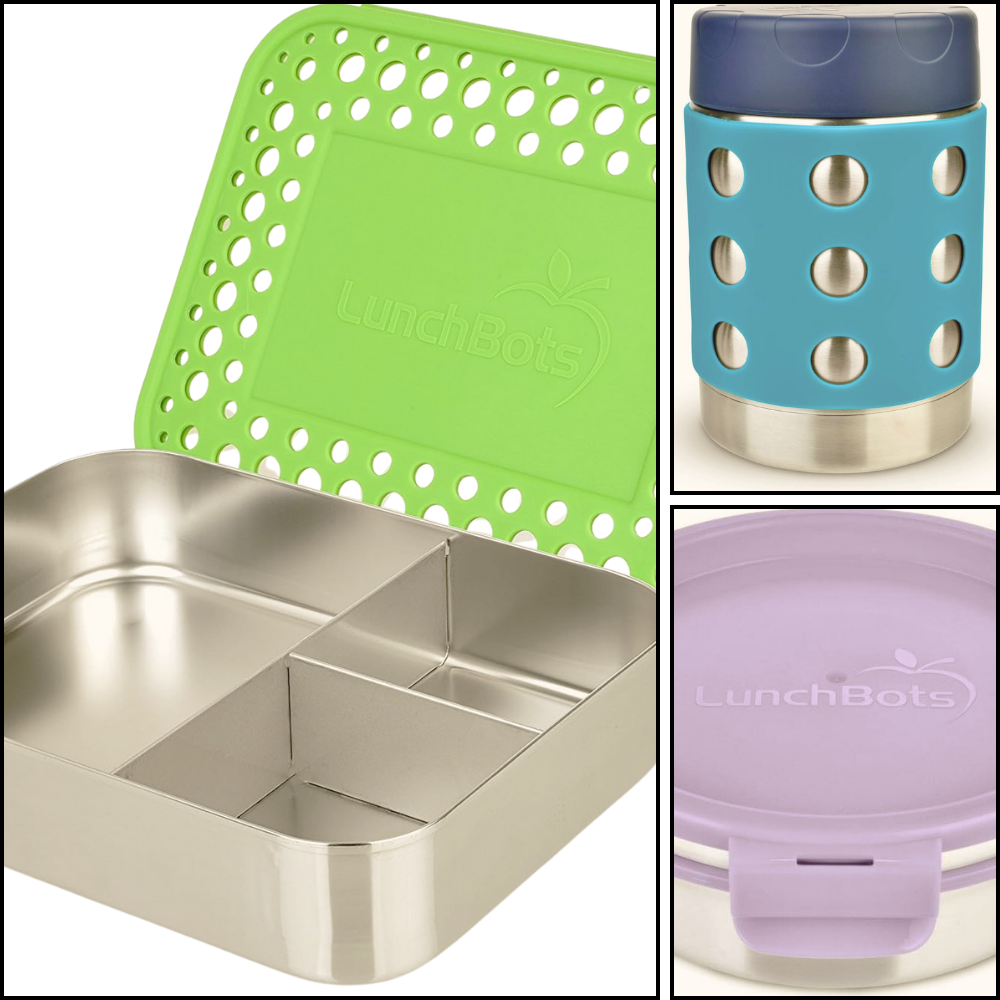
If you’re looking for a simple, durable, and truly eco-friendly way to pack lunches, LunchBots is one of the best options out there. They specialize in high-quality stainless steel bento boxes, thermoses, and food containers that help cut out plastic—and they’ve been doing it since 2008.
LunchBots makes it easy to pack waste-free meals with containers that are built to last for years (not months). Their designs are straightforward and functional, perfect for kids, teens, and adults who need lunches that stay fresh and organized without creating tons of trash. Plus, they’re a proud 1% for the Planet member, donating a portion of every purchase to environmental causes.
Popular LunchBots Products
- Stainless Steel Bento Boxes: Durable, easy-to-pack containers in various sizes and compartment layouts.
- Build-a-Bento Sets: Customizable options to fit your child’s favorite meal combinations.
- Dip Containers: Small stainless steel containers perfect for sauces, hummus, or dressings.
- Thermoses: Insulated food jars for keeping soups and hot lunches warm.
- Accessories: Silicone dividers, insulated bags, and utensils made to complement their bento boxes.
SIGG Water Bottle
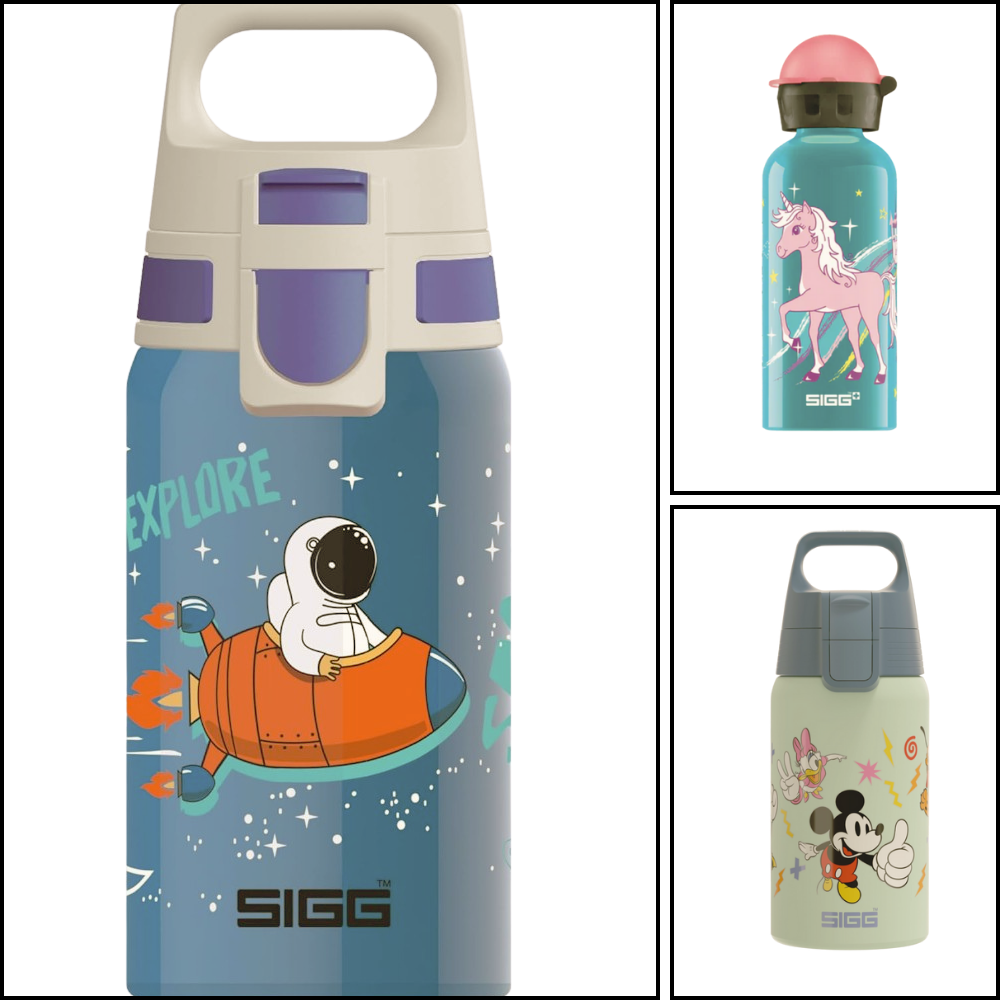
Finding a reusable water bottle that’s sturdy, stylish, and actually sustainable can feel like a lot—but SIGG makes it easy. They’ve been making high-quality bottles since 1908, and today they’re focused on doing it with the planet in mind.
SIGG’s bottles are made from recyclable aluminum, recycled stainless steel, or plant-based renewable materials—with no BPA, no phthalates, and no toxic coatings. Their MyPlanet Collection even uses 100% recycled aluminum, giving new life to old materials. Plus, they design everything to be long-lasting, lightweight, and fully recyclable when you’re finally done with it (which honestly might take a while).
Popular SIGG Products:
- Classic Aluminum Water Bottles: Lightweight and durable, with tons of color and design options.
- Thermo Flasks: Insulated stainless steel bottles that keep drinks hot or cold for hours.
- Kids Water Bottles: Fun, easy-to-carry bottles made for small hands (and free from all the stuff you don’t want near kids’ drinks).
- Lunchboxes: Minimalist stainless steel lunchboxes for simple, low-waste lunches.
- Accessories: Extra lids, cleaning brushes, and parts to help keep your bottle going even longer.
Where to Get Back-to-School Supplies?
When it comes to finding back to school supplies, you’ve got more options than ever—and a lot more chances to shop sustainably if you know where to look.
Big-box stores like Target and Staples still run major back-to-school sales every summer, and while they carry plenty of the basics, it’s worth checking labels and looking for products made with recycled materials or natural fabrics. Some big retailers are starting to expand their eco-friendly sections, especially for notebooks, backpacks, and lunch gear.
Eco-focused online shops like EarthHero are great if you’re looking for plastic-free supplies, made from organic materials, or designed to last for years. These stores often curate brands you might not find locally, giving you more choices without all the greenwashing.
Direct from the brands is another great option—especially if you want to support companies that are truly committed to sustainability. Brands like Wisdom Supply Co., Terra Thread, SoYoung, and Klean Kanteen sell directly through their websites, often with special back-to-school bundles or early-bird deals.
Tips for a Greener Back-to-School Season
Choosing eco-friendly back-to-school supplies is a big step, but plenty of simple habits can make the whole season a little lighter on the planet (and often easier on your budget, too).
Here are a few ways to make your school year more sustainable:
Reuse What You Already Have
Before buying new back-to-school supplies, quickly inventory what’s still in good shape. Half-used notebooks can be refreshed by tearing out old pages, backpacks often need a quick wash, and lunch boxes usually only need a good cleaning.
Reusing supplies saves money, reduces waste, and shows kids that “good enough” can be better than buying new. Even a few small reuses can lighten your shopping list—and your environmental footprint.
Prioritize Quality Over Quantity
Big bundle deals might seem like a bargain, but low-quality supplies often break, rip, or wear out long before the school year ends. Choosing durable options—like stainless steel water bottles, recycled paper notebooks, and sturdy backpacks—means fewer replacements, less waste, and better value over time.
Choose Plastic-Free or Low-Plastic Options
When shopping for back-to-school supplies, look for natural materials like stainless steel, glass, organic cotton, bamboo, or recycled paper. These materials are safer for kids, break down more naturally at the end of their life, and don’t shed microplastics into the environment like synthetic materials do.
Even swapping out a few plastic items—like lunch containers, binders, or folders—helps reduce long-term waste and supports healthier, more sustainable products for your family and the planet.
Start a School Supply Swap
Before buying all new back-to-school supplies, consider organizing a mini swap with neighbors, friends, or your child’s school community. Chances are, plenty of families have extra notebooks, backpacks, folders, or art supplies sitting unused at home.
Swaps are a fun, low-cost way to give gently used items a second life. They also help keep perfectly good supplies out of the landfill. Plus, they’re a great opportunity to connect with your community and teach kids the value of reusing and sharing, not just consuming.
🌟 Quick Tip:
Get kids involved! Let them help pick out sustainable supplies, decorate reusable lunch containers, or organize a supply swap. It’s a fun way to build lifelong habits around mindful consumption.
Where to Get Free School Supplies?
While eco-friendly shopping is important, so is making sure every child has the supplies they need to succeed. Sometimes, the cost of back-to-school supplies can be overwhelming—especially when families are juggling multiple kids or tight budgets.
In fact, according to the National Retail Federation, American families spend an average of $890 each year on back-to-school shopping.2 That’s a major expense for many households, and it’s why free school supply programs are so essential.
Although these supplies may not always be the most eco-friendly, getting help with the cost is critical—and giving items a full, useful life is one of the best ways to reduce waste, too.
Here are some trusted organizations offering free school supplies:
- United Way — Organizes back-to-school drives that distribute donated supplies through local chapters and school districts.
- Operation Homefront – Back-to-School Brigade — Focuses on providing school supplies to military families through community-based events.
- Kids In Need Foundation (KINF) — Supplies bulk school materials directly to teachers and schools serving low-income communities.
- Back 2 School America — Distributes grade-specific supply kits through community organizations, helping students start the school year prepared.
- The Salvation Army — Hosts annual “Back to School” events, providing free backpacks and essential supplies to students in need.
- Boys & Girls Clubs of America — Partners with retailers to offer free supplies and support services for students in underserved communities.
Many of these programs operate locally, so it’s also worth checking with community centers, libraries, local nonprofits, and even your child’s school for additional resources.
This Has Been About Back-To-School Supplies
Switching to eco-friendly back-to-school supplies is a simple but meaningful way to reduce waste, avoid unnecessary plastic, and invest in higher-quality products that last.
It doesn’t have to be all or nothing—even replacing a few items with more sustainable options makes a difference over time. Whether you’re reusing last year’s backpack, picking up recycled notebooks, or swapping plastic sandwich bags for stainless steel containers, each choice adds up.
And while kids might be focused on new notebooks and colorful markers, they’re also learning something bigger: that the way we consume matters. And that’s a lesson worth passing on.
References
- National Retail Federation. (2023, June 29). Back-to-class shopping expected to reach record levels. https://nrf.com/media-center/press-releases/back-class-shopping-expected-reach-record-levels ↩︎
- National Retail Federation. (2023, July 13). Back-to-class shopping expected to reach record levels. National Retail Federation. https://nrf.com/media-center/press-releases/back-class-shopping-expected-reach-record-levels ↩︎
